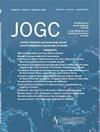Clinical Consensus Statement No. 459: Oncofertility – Bridging the Geographical Gap in Pediatric and Adolescent Gynaecology in Canada
IF 2
Q2 OBSTETRICS & GYNECOLOGY
引用次数: 0
Abstract
Objective
To review the options for fertility preservation in Canada for paediatric and adolescent gynaecology patients who are receiving fertotoxic therapy.
Target Population
Adolescent and pediatric individuals with ovaries and a treatment plan that affects future reproductive options.
Options
Depending on the individual’s pubertal status and in accordance with ethical guidelines, appropriate fertility preservation methods such as oocyte preservation, ovarian tissue preservation, and ovarian transposition should be considered alongside their treatment. Modification of treatment protocols may also be necessary.
Outcomes
Canada currently lacks provincial and national initiatives to offer fertility preservation for pediatric and adolescent individuals. Many barriers contribute to this, including knowledge gaps among providers, lack of assent processes, and limited access to urgent consultation and specialized procedures. In addition to this, patients and providers may experience barriers in accessing funding.
Benefits, Harms, and Costs
The recommendations outlined in this committee opinion will benefit both providers and families by providing them with knowledge of treatment options. While consultations with specialist providers and in hospital procedures are covered, patients are responsible to pay for medications, procedures performed in private surgical centres, and tissue storage, which can put a large financial burden on families. There may be inter-province and inter-hospital differences in coverage for treatment. Additionally, there is considerable gender inequity in the higher cost of cryopreservation of eggs compared with sperm.
Evidence
A literature review of systematic reviews and original research (cohort studies, case series/studies were included; there were no randomized Controlled trials published) was conducted in PubMed from January 1990 to January 2025 using the MeSH search terms fertility preservation, paediatric/pediatric, adolescent, and female. Articles were included if they focused on individuals assigned female at birth, were related to the field of oncofertility, were available through the University of Calgary’s library system, and were written in English.
Validation Methods
The authors rated the quality of evidence and strength of recommendations using the Grading of Recommendations Assessment, Development and Evaluation (GRADE) approach. See online Appendix A (Tables A1 for definitions and A2 for interpretations of strong and conditional [weak] recommendations).
Intended Audience
Family physicians and nurse practitioners providing primary care, obstetricians and Gynaecologists, Reproductive Endocrinologist and Infertility Specialists, and Paediatric Oncologists
Tweetable Abstract
Oncofertility – It takes a village. Building a network to improve access to oncofertility in Canada.
SUMMARY STATEMENTS
- 1.Fertotoxic therapy can have detrimental effects on the future fertility of paediatric and adolescent patients (high).
- 2.If natural conception occurs in a childhood cancer survivor, there is no increased risk of chromosomal anomalies, genetic anomalies, or cancers (high).
- 3.Ovarian tissue cryopreservation is no longer experimental and is the only option for fertility preservation in prepubertal patients (moderate).
- 4.In pubertal patients, ovarian tissue cryopreservation can be combined with additional procedures under one general anesthetic to minimize morbidity (moderate).
- 5.In pubertal patients, oocyte cryopreservation, where available, and where a delay in treatment is acceptable, should be first choice for fertility preservation (moderate).
- 6.Starting chemotherapy is not a contraindication to ovarian tissue cryopreservation (low).
RECOMMENDATIONS
- 1.All pre- and post-pubertal individuals who have ovaries should be counselled with accurate information on the risks of infertility/subfertility with the use of fertotoxic therapy and be offered a referral to a specialist in fertility preservation (strong, high).
- 2.Initial consultation with a specialist in fertility preservation can be offered through telehealth to facilitate access in remote areas (strong, high).
- 3.If natural conception occurs in a childhood cancer survivor, they should be counselled that there is no increased risk of chromosomal anomalies, genetic anomalies, or cancer (unless the patient’s cancer was genetically related) (strong, high).
- 4.All individuals who are undergoing fertility preservation should have the option of providing assent to their care in addition to parental/guardian consent (strong, high).
- 5.All paediatric oncology programs should have oncofertility pathways for offering fertility preservation, with multidisciplinary teams composed of oncology, reproductive endocrinology and infertility, paediatric gynaecology, paediatric surgery, and ethics representation, depending on the province and hospital system (strong, high).
- 6.Pre-pubertal patients should be offered gonadal shielding and/or ovarian transposition or ovarian tissue cryopreservation prior to the start of targeted radiation therapy in which the ovaries will be in field of treatment (conditional, low).
- 7.Long-term follow-up should be the standard of care to monitor menstrual function, ovarian reserve, healthy sexual function, contraception, and review fertility goals (strong, moderate).
临床共识声明第459号:肿瘤生育-弥合加拿大儿科和青少年妇科的地理差距
目的回顾加拿大儿科和青少年妇科患者在接受胎毒治疗时保留生育能力的选择。目标人群有卵巢的青少年和儿童个体,以及影响未来生育选择的治疗计划。根据个体的青春期状态和伦理准则,适当的生育能力保存方法,如卵母细胞保存、卵巢组织保存和卵巢转位,应考虑与他们的治疗。修改治疗方案也可能是必要的。结果加拿大目前缺乏省级和全国性的举措来为儿童和青少年提供生育保护。造成这种情况的许多障碍,包括提供者之间的知识差距、缺乏同意程序以及获得紧急咨询和专门程序的机会有限。除此之外,患者和提供者在获得资金方面可能会遇到障碍。益处、危害和成本本委员会意见中概述的建议将使提供者和家庭都受益,使他们了解治疗方案。虽然包括专科医生的咨询和住院手术,但患者要负责支付药费、在私人外科中心进行手术和组织储存的费用,这可能给家庭带来很大的经济负担。在治疗覆盖范围方面,可能存在省与省之间和医院之间的差异。此外,与精子相比,卵子冷冻保存的成本更高,这方面存在相当大的性别不平等。证据包括系统综述和原始研究(队列研究、病例系列/研究)的文献综述;从1990年1月到2025年1月,在PubMed上使用MeSH搜索词进行了一项随机对照试验,检索词包括生育力保存、儿科/儿科、青少年和女性。如果文章集中在出生时被指定为女性的个人,与肿瘤生育领域有关,可以通过卡尔加里大学的图书馆系统获得,并且用英语撰写,则纳入其中。验证方法作者使用分级推荐评估、发展和评价(GRADE)方法对证据质量和推荐的强度进行评级。参见在线附录A(表A1为定义,表A2为强建议和条件[弱]建议的解释)。目标受众提供初级保健的家庭医生和护士从业人员、妇产科医生、生殖内分泌学家和不孕症专家、儿科肿瘤学家。在加拿大建立一个网络,以改善获得癌症生育的机会。摘要STATEMENTS1。胎毒治疗可对儿童和青少年患者未来的生育能力产生不利影响(高)。如果儿童癌症幸存者自然受孕,染色体异常、基因异常或癌症的风险不会增加(高)。卵巢组织冷冻保存不再是实验性的,是保存青春期前患者生育能力的唯一选择(中等)。在青春期的患者中,卵巢组织冷冻保存可以在一种全身麻醉下与其他手术相结合,以减少发病率(中度)。对于处于青春期的患者,卵母细胞冷冻保存,如果可以,并且可以接受延迟治疗,应该是保存生育能力的首选(中等)。开始化疗不是卵巢组织冷冻保存的禁忌症(低)。所有青春期前和青春期后有卵巢的个体都应该被告知使用胎毒治疗导致不孕/低生育能力风险的准确信息,并被推荐给保留生育能力的专家(强,高)。2 .可通过远程保健向保留生育能力的专家提供初步咨询,以便利偏远地区的就诊(强,高)。如果儿童癌症幸存者发生自然受孕,应告知他们染色体异常、基因异常或癌症的风险不会增加(除非患者的癌症与遗传有关)(强、高)。4 .除父母/监护人同意外,所有正在进行生育保留的个人都应有同意其护理的选择(强,高)。所有儿科肿瘤学项目都应该有提供生育保护的肿瘤生育途径,由肿瘤学、生殖内分泌学和不孕症、儿科妇科、儿科外科和伦理代表组成的多学科团队,具体取决于省和医院系统(强,高)。
本文章由计算机程序翻译,如有差异,请以英文原文为准。
求助全文
约1分钟内获得全文
求助全文
来源期刊

Journal of obstetrics and gynaecology Canada
OBSTETRICS & GYNECOLOGY-
CiteScore
3.30
自引率
5.60%
发文量
302
审稿时长
32 days
期刊介绍:
Journal of Obstetrics and Gynaecology Canada (JOGC) is Canada"s peer-reviewed journal of obstetrics, gynaecology, and women"s health. Each monthly issue contains original research articles, reviews, case reports, commentaries, and editorials on all aspects of reproductive health. JOGC is the original publication source of evidence-based clinical guidelines, committee opinions, and policy statements that derive from standing or ad hoc committees of the Society of Obstetricians and Gynaecologists of Canada. JOGC is included in the National Library of Medicine"s MEDLINE database, and abstracts from JOGC are accessible on PubMed.
 求助内容:
求助内容: 应助结果提醒方式:
应助结果提醒方式:


